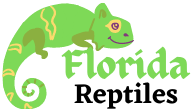- You have no items in your shopping cart
- Subtotal: $0.00
Dutch Hookbill ducks are a unique and very old poultry breed thought to have originated in the Netherlands’ Noord-Holland province between the seventeenth and eighteenth centuries. As their name implies, the breed features a downward curving beak, setting it apart from other duck breeds. It’s believed this trait was useful to duck breeders in making it easier for hunters to distinguish the domesticated Hookbill from wild ducks that inhabited the same land. In Holland, these ducks were managed in the waterways and canals of the countryside and were expected to forage for most of their food. Today, they’re still among the best foragers of domestic ducks.
According to the Dutch Association of Breeders of Domesticated Waterfowl (Nederlandse Vereniging van fokkers van gedomesticeerd watervogels), Hookbill ducks and the Noord-Holland White Breasted duck, also known as the Witborst duck, had similar genealogies. Their exact origins have never been determined, but it’s speculated that they developed from early importations of Indian Runners. This idea is supported by J. Bonenkamp in the magazine Avicultura (8/1990) where he recounts finding pure Hookbills among groups of ducks in East India.
The unique appearance of the breed made them desirable as ornamental birds, but was soon recognized as excellent layers of eggs. That combined with their remarkable foraging capability made the breed widely popular on Dutch farms. In 18th-century Holland, ducks were provided a place to nest and feed while they were brooding. Then ducks and ducklings were all sent out to the surrounding wetlands to forage for their food and received no supplemental food. Ducklings also had their wings clipped to make them easier to catch later. By mid-August, the birds were gathered and sent to market in Purmerend, where they were purchased by duck keepers who would use them for eggs. The birds kept for breeding were selected to be sturdy and disease resistant, self-sufficient, adaptable to new circumstances, and efficient layers that needed less food than other breeds in order to be productive.
The breed declined in the 20th century due to a diminished market for duck eggs and the effect of increasingly polluted waterways that served as their home. By 1980, the Hookbill was nearly extinct, but through a Dutch effort led by Hans van de Zaan, the last 15 birds were collected and used to start a conservation breeding program in the Netherlands.
Dave Holderread was among the first to import the Dutch Hookbill into the United States in 2000. He found that there were three bill types in the population: extreme curve, moderate curve, and straight. In his book Storey’s Guide to Raising Ducks (2011), Holderread outlines that the most effective breeding strategy was to cross birds with moderately curved beaks to each other or an extremely curved beaked bird with a straight beaked bird as the best breeding options. He found that crosses between birds with extremely curved beaks had poor egg fertility. There are still very few primary breeding flocks of Dutch Hookbills in the U.S.
Dutch Hookbill ducks have excellent flight capability, especially younger individuals. The birds reach sexual maturity very quickly by around 16 weeks of age. Healthy ducks can be expected to lay anywhere from 100 to 225+ eggs per year. They come in three primary color variations: dusky, white, and white-bibbed dusky. Other colors exist but not in great numbers here in the states. The Hookbill is a remarkable breed that deserves a second look as a viable and efficient egg producer for small-scale farming.
| Available | Each, Pair, Trio |
|---|







Customer reviews
Reviews
There are no reviews yet.
Write a customer review